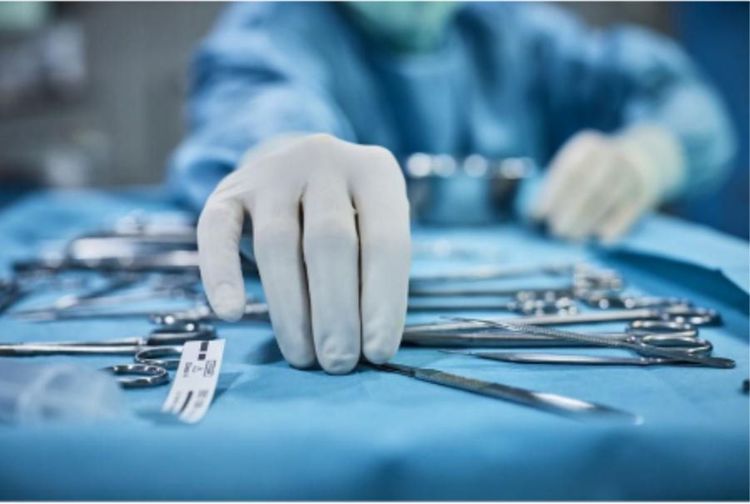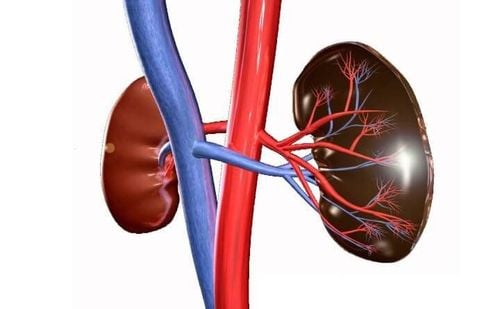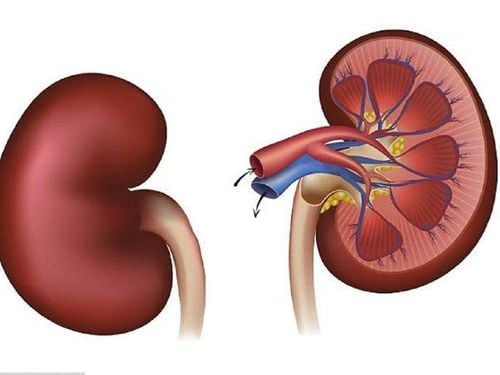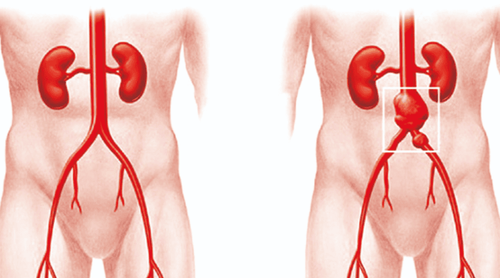This is an automatically translated article.
The article is professionally consulted by Master, Doctor Do Nguyen Thuy Doan Trang - Head of Extracorporeal Circulation Team - Cardiovascular Center - Vinmec Central Park International General Hospital.Renal artery thrombosis is caused by the rupture of atherosclerotic plaques. Immune response to foreign substances will occur after embolism leading to impaired renal function in 3-8 weeks. In case of large regional embolism or recurrent episodes of embolism, the patient will have acute renal failure.
1. Causes of renal artery thrombosis in patients with atrial fibrillation
Renal artery thrombosis in patients with atrial fibrillation is a rare and often overlooked clinical condition. When patients with atrial fibrillation have abdominal or hip pain without other surgical causes of abdominal pain, renal artery thrombosis should be considered.The cause of renal artery thrombosis originates from the rupture of atherosclerotic plaques. Immune response to foreign substances will occur after embolism leading to impaired renal function in 3-8 weeks. In case of large area embolism or recurrent episodes of embolism, the patient will have acute renal failure.
2. Diagnosis of renal artery thrombosis in patients with atrial fibrillation
Renal artery thrombosis usually presents with symptoms of abdominal pain and flank pain, rarely posterior pain. In addition, the patient also has other symptoms such as fever, vomiting, but these symptoms are also common in other medical and surgical abdominal pathologies. Therefore, it is often misdiagnosed and missed. Therefore, the following tests are usually ordered when renal artery thrombosis is suspected:Biochemical tests Biochemical tests are needed to support the diagnosis of renal artery thrombosis in patients with AF. Those biochemical tests include quantitative blood LDH test, proteinuria test.

The abdominal ultrasound technique is less sensitive in diagnosing renal artery thrombosis in patients with atrial fibrillation, in case studies, only about 11% can diagnose renal artery thrombosis. Because this is a fast, low-cost technique, it is recommended by the doctor to examine the abdomen.
3. Treatment of renal artery thrombosis
The best treatment for renal artery thrombosis in patients with atrial fibrillation is still to treat hypertension by restoring the damage caused by the arteries. Restoration of these lesions can be accomplished by percutaneous angioplasty, also known as percutaneous angioplasty, or surgical intervention.Current drug treatment can normalize blood pressure, however, drugs cannot affect the cause of renal artery disease. The specific treatment methods are as follows:
Treatment of renal artery thrombosis in patients with atrial fibrillation with drugs The drugs commonly used to treat renal artery thrombosis in patients with atrial fibrillation are enzyme inhibitors. In combination with beta-blockers and diuretics, calcium channel blockers are also sometimes indicated.
The use of antihypertensive drugs is usually well controlled in most cases, however, when using drugs, especially antihypertensive drugs of the ACE inhibitor group, special attention should be paid because it can renal function can be impaired, glomerular filtration rate is reduced, so when using this group of drugs, it is necessary to check renal function regularly. The use of ACE inhibitors is contraindicated in cases of bilateral renal artery stenosis.

Renal artery thrombosis surgery can be intervened by removing the endothelium, bridging the artery or directly cutting the lesion, depending on the extent and location of the lesion as well as the state of kidney failure to decide. determine the most appropriate surgical method.
Treatment of renal artery thrombosis in patients with atrial fibrillation by percutaneous angioplasty With the treatment of renal artery thrombosis by percutaneous angioplasty will allow dilate narrowed arteries. Percutaneous angioplasty treatment has been applied for a long time and is increasingly widely used because this technique is a gentle procedure, the postoperative period is short and the treatment results are very good. .
However, when choosing a treatment method for renal artery thrombosis for a patient, it is also necessary to consider the age of the patient, the extent of damage as well as the location of the blockage and atherosclerosis in the patient's arteries. other sites and the consequences of atherosclerosis on adjacent organs.
If in the case of renal vascular dysplasia, vascular orthopedic surgery or surgical methods are often chosen because it brings good results and cures the symptoms of hypertension. If there are cases of atherosclerosis, the choice of surgical or orthopedic vascular methods needs to be carefully considered because of the complications, especially complications that cause impaired kidney function, so it is necessary to evaluate Assess renal function to decide on the most appropriate treatment option for patients with renal artery thrombosis on the background of atrial fibrillation.

Currently, Cardiovascular Center - Vinmec International General Hospital is one of the leading centers in the country for examination, diagnosis, screening and treatment of cardiovascular diseases. With the convergence of a team of experienced and reputable experts in the field of surgery, internal medicine, interventional cardiac catheterization and the application of advanced techniques in the diagnosis and treatment of diseases. Cardiovascular management, along with a system of modern equipment, on par with the most prestigious hospitals in the world such as: 3 Tesla MRI (Siemens), 640 CT machine (Toshiba), other equipment EVIS EXERA III advanced endoscope (Japan Olympiad), Avace high-end anesthesia system, Hybrid operating room according to international standards... The Cardiovascular Center at Vinmec International General Hospital has achieved many successes. work and gain the trust of a large number of patients.
Please dial HOTLINE for more information or register for an appointment HERE. Download MyVinmec app to make appointments faster and to manage your bookings easily.














